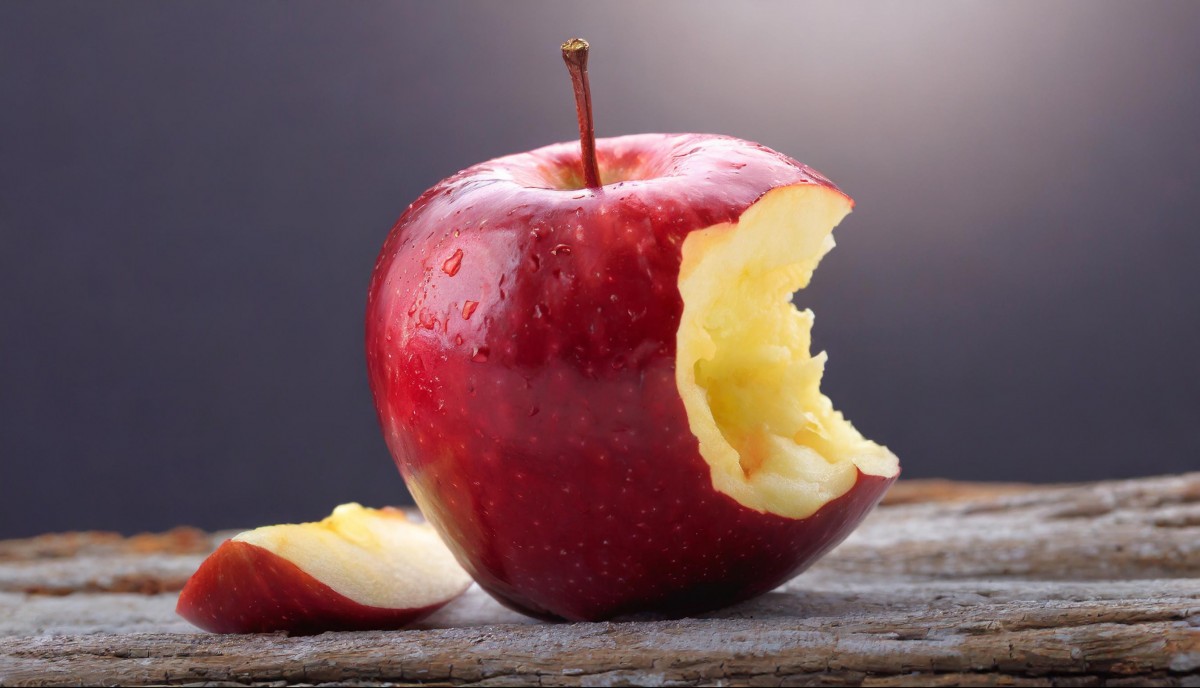The Power of Clarity: Developing Awareness of Our Perceptual Layers
Our ability to understand and manage our perceptions is one of the principal ideas of Chan-Dao for achieving self-wisdom. The focus of this blog is to understand what perceptions are and how our brain organizes them. By taking this step to understand our perceptions, we begin the journey to develop ‘clarity’.
Perceptions
A 'perception' is one aspect of interpreting the world and your reality. You can also think of it as an idea.
For example, you may perceive that an object that is shaped like a sphere with a red surface, a short stem, and a yellowish interior is an apple. Furthermore, it may have a crunchy feeling when you bite into it and may also taste sweet.

There can be many ‘levels’ of perceptions. A ‘higher level’ perception would be more complex because it is based on other perceptions.
For example, you will have a perception of what the colour of red is. The apple in the above example uses this perception of red. So you could say that an apple is a more complex perception than the colour of red.
Basic Perceptions
Basic Perceptions are low-level perceptions with fewer perceptual associations.
Take ‘the colour of red’ for example. You were likely able to see the colour red when you were a baby in your mother’s womb. Medical science has determined that babies open their eyes at the end of the second trimester, around 27 weeks into pregnancy.
Once the eyes open in the womb, a baby is already able to see objects and details (especially when there is a strong light source on the belly, such as the sun or a flashlight), and therefore develops basic perceptions.
Babies can develop the sense of touch by week 7, taste by week 10, smell by week 10, and sound by week 18. Although these estimates may be off by 1 or 2 weeks depending on certain factors, we can almost certainly say that a baby will have fully developed all five senses while inside the womb.
Sense-Perceptions
A baby is already developing perceptions in the womb through our basic sense organs, such as touch, sight, smell, taste, and sound. These are called Sense-Perceptions and define much of our Basic Perceptions.
As we grow and experience life, we may add more details about our Sense-Perceptions.

Each of these Sense-Perceptions will have basic perceptions such as bright light, darkness, movement, stillness, loud sounds, quiet sounds, sweet taste, sour taste, salty taste, sweet smell, foul smell, rough, smooth, etc.
Sense-Perceptions are useful for describing tangible objects.
Perceptual Layers
A perceptual layer is a perception that includes other perceptions. This means that effectively all all of your perceptions can be thought of as perceptual layers.
By organizing our perceptions as layers, we now have a convenient way to classify our perceptions in increasingly complex ways. We can also visualize this abstract idea of a layer, and use it to help how we organize information.
Consider the apple example again. It is a very complex perceptual layer and is based on your experience of many different types of apples. An apple would therefore be a perceptual layer that includes many types of apples, each of which will have a perceptual layer that is based on Sense-Perceptions.

For example, there are Red Delicious apples, Macintosh apples, Golden Delicious apples, etc. Each type of apple will have a unique combination of Sense-Perceptions and therefore have its own Perceptual Layer.
Complex Perceptual Layers
As you develop perceptual layers that include many other levels of perceptual layers, the ideas that we form in our brain become more complicated.
Continuing with the apple example, we can see how we evolve the complexity of our thoughts in the chart below (this is a specific example and the way you have developed your perceptual layers may differ).
| Layer #
|
Perception Layer
|
Description
|
| 1
|
Sense-Perceptions
|
Basic perceptions based on our 5 senses
|
| 2
|
Red Delicious Apple
|
A specific type of apple, described in many ways with Sense-Perceptions
|
| 3
|
Apples
|
A group of perceptions that include Red Delicious, Golden Delicious, etc., each of which has different sense-perceptions
|
| 4
|
Fruits
|
A group of perceptions that include apples, oranges, etc.
|
| 5
|
Delicious Fruits
|
A specific group of perceptions that include Fruits that you perceive are tasty
|
| 6
|
Food
|
A group of perceptions that include things you can eat such as fruits, vegetables, meat, dessert, etc.
|
The second layer includes relatively simple perceptual layers because they consist mostly of Sense-Perceptions. These are largely tangible objects that we can sense such as grass, soil, rock, cloud, sun, wind, water, etc.
By the third layer and beyond, we have much more complicated perceptual layers. These ideas are based on other tangible objects. We used the example of Apples above, but this extends to ideas such as a wall, building, home, computer, phone, etc.
Evaluative Perceptual Layers
Evaluative Perceptual Layers are experience-based judgements that compare two or more perceptual layers.

The most basic Evaluative Perceptual Layers would be judgements about good and bad, better and worse, tastier and less tasty, brighter and darker, louder and quieter, sweeter and more bitter, smoother and rougher, etc.
What makes Evaluative Perceptual Layers special is that it cannot exist without experience.
Consider for example that you eat a Red Delicious apple for the first time (As you read this, you may be thinking I’ve never eaten a Red Delicious apple! In that case substitute the Red Delicious apple for another kind of apple that you know well). If the apple happens to not be ripe, you may think that a Red Delicious apple is bitter and not tasty.
As you continue eating more of these apples over time, you gain the experience that the Red Delicious apple is probably meant to be eaten when it is ripe, and therefore sweet and tasty.
Here we are comparing the perceptual layer of Red Delicious apple with the perceptual layer of tasty.
Tasty is an Evaluative Perceptual Layer. For this idea to exist, you need experience in tasting other foods that are not tasty. Otherwise, there is no need to create this perceptual layer!
The foods you do not like the taste of will be deemed unappetizing. The foods you do like the taste of are deemed tasty. With experience, you learn what is considered tasty and what is not.
Now you have tasty and unappetizing. Naturally, you will develop other similar Evaluative Perceptual Layers for not tasty, such as flat, flavourless, stale, etc.
Here are some other examples of Evaluative Perceptual Layers (and you may disagree with them if your experiences are very different):
- Red Delicious apples are tastier than Macintosh apples
- Eating apples is healthy
- Eating apples is healthier than eating junk food
- Eight hours of sleep per day is necessary for health
- I need to be wealthy
- Being wealthy makes me happy
- Being healthy makes me happy
- Computer games are bad for you
- Computer games are good for you
Abstract Perceptual Layers
Abstract Perceptual Layers are high-level complex perceptual layers. They are based on so many other levels of perceptual layers that they become far removed from the basic Sense-Perceptions.

Here are some examples of Abstract Perceptual Layers:
- An honest person
- A courageous person
- A creative person
- I am a vegetarian / Vegan / ‘meat-a-tarian’ (someone who eats lots of meat)
- I believe in this [substitute for any religion] religion or I am an atheist
- A journey to the planet Mars
- Humankind is good
- People are generally honest
- Everyone is suffering
- There are aliens all over the universe
The idea of an honest person seems simple at first. When you take the time to digest this teaching on perceptions and perceptual layers, you will come to realize that it is not necessarily so. If you consider yourself an honest person, ask yourself the following questions:
- Have you ever lied in your life?
- Or put another way, have you ever told someone or yourself, something that is not true?
- How many times have you lied in your life?
- How long ago was your last lie?
- Is it lying if there was seemingly no consequence?
- Are you now an honest person if you decide that you will no longer tell a lie?
Who hasn’t learned from telling a lie when they were a child? If you told a lie 5 years ago but haven’t since, are you still an honest person? If you tell more truths than lies, are you considered an honest person?
As you can see, the definition or idea of an honest person will differ from person to person.
The Power of Clarity
We have learned that Complex, Evaluative, and Abstract Perceptual Layers are complicated and very much based on experience.
Over time, we collect more and more perceptual layers, and develop a ‘cabbage brain’. It becomes more difficult to see the lower layers of perceptions inside the cabbage because we rely on the outer or top layers of the cabbage to make quicker judgements and decisions.

When we can observe these perceptual layers as we use them, we develop more awareness about how we interact with our environment, the decisions we make, the things we say, and the motivations behind our actions.
When we learn new things, we can more easily assess the validity of the information and organize it better.
We also begin to see how it is possible to challenge and update the perceptual layers that we have (a topic to be discussed another time and a link will be provided here when ready).
Having the Power of Clarity means you will be less confused, not easily manipulated, and even feel less tired.
All this introspection and awareness is what leads to the idea of ‘clarity’ over time. It does not happen immediately, however. Continued perseverance, strive, and focus are necessary and that means you need to embrace the spirit of the Shaolin Warrior.
Shàolín Chándào perspective:
The study of perceptions is incomplete without exploring emotions as they are tightly connected. Take note that the dictionary is a book of perceptual layers. Much wisdom is built into words and why they exist, so start with a dictionary when you seek answers.








 Written by Master Dao on Monday, January 22, 2024
Written by Master Dao on Monday, January 22, 2024
















 YouTube
YouTube Instagram
Instagram Facebook
Facebook Discord
Discord